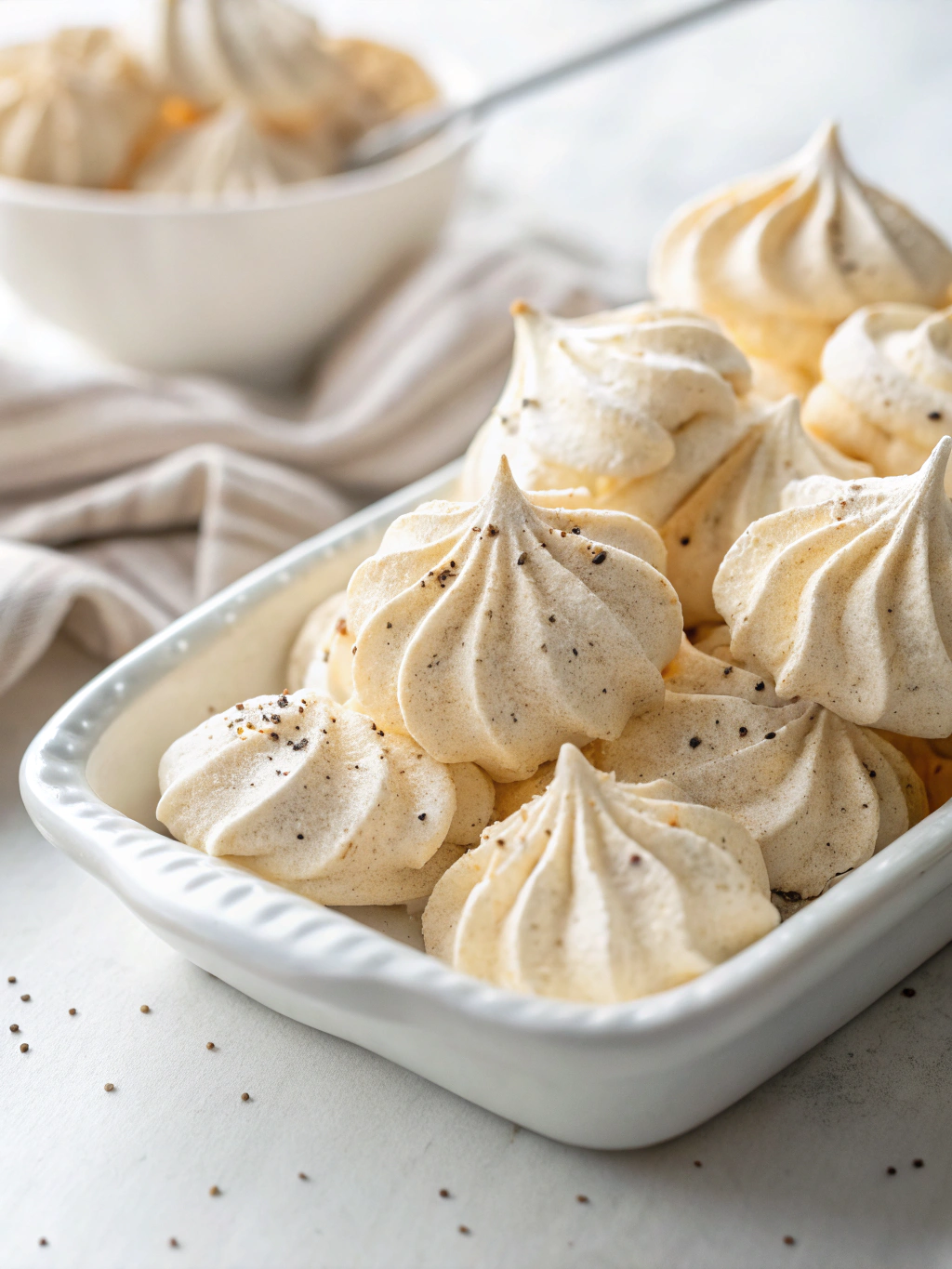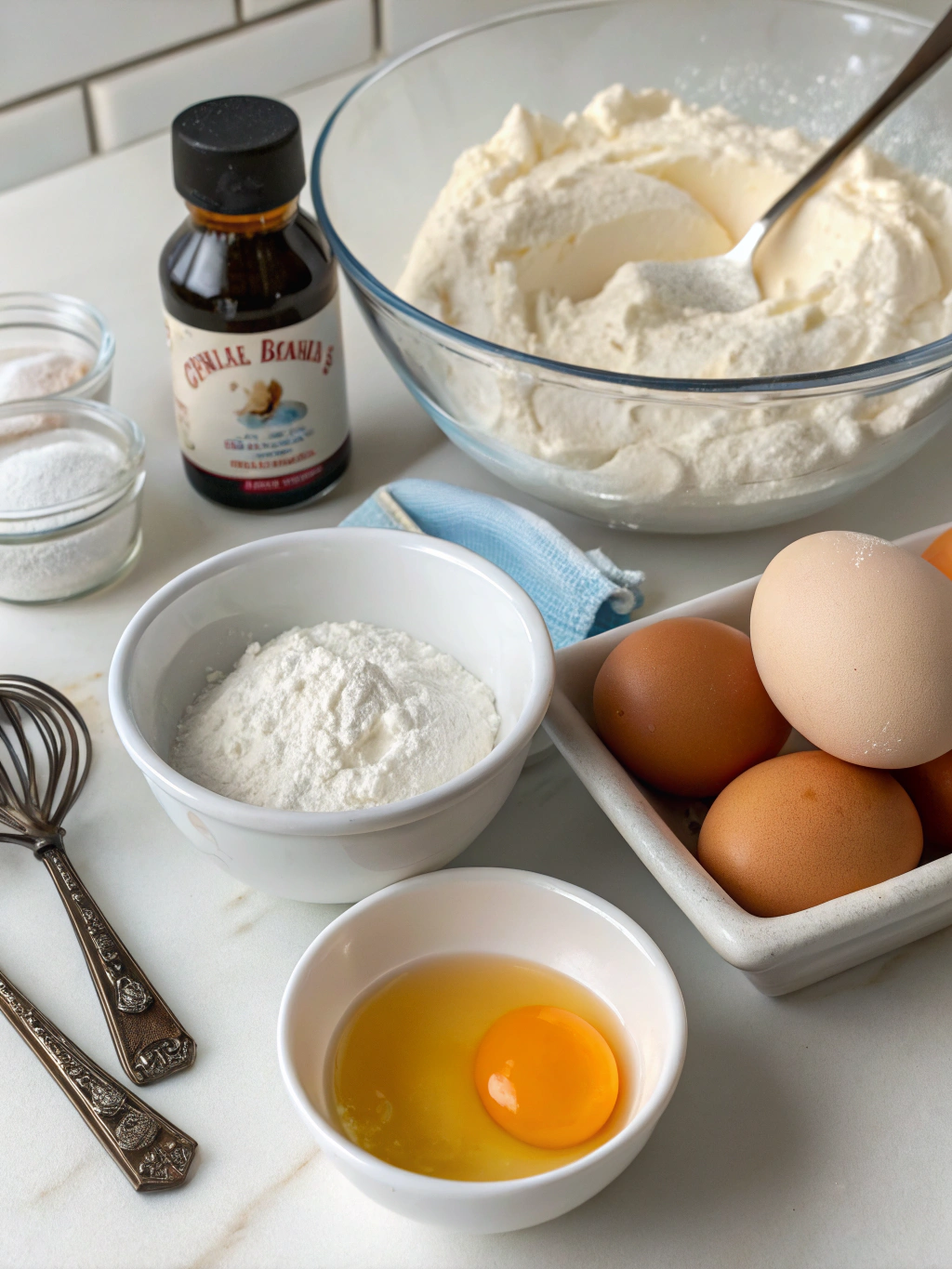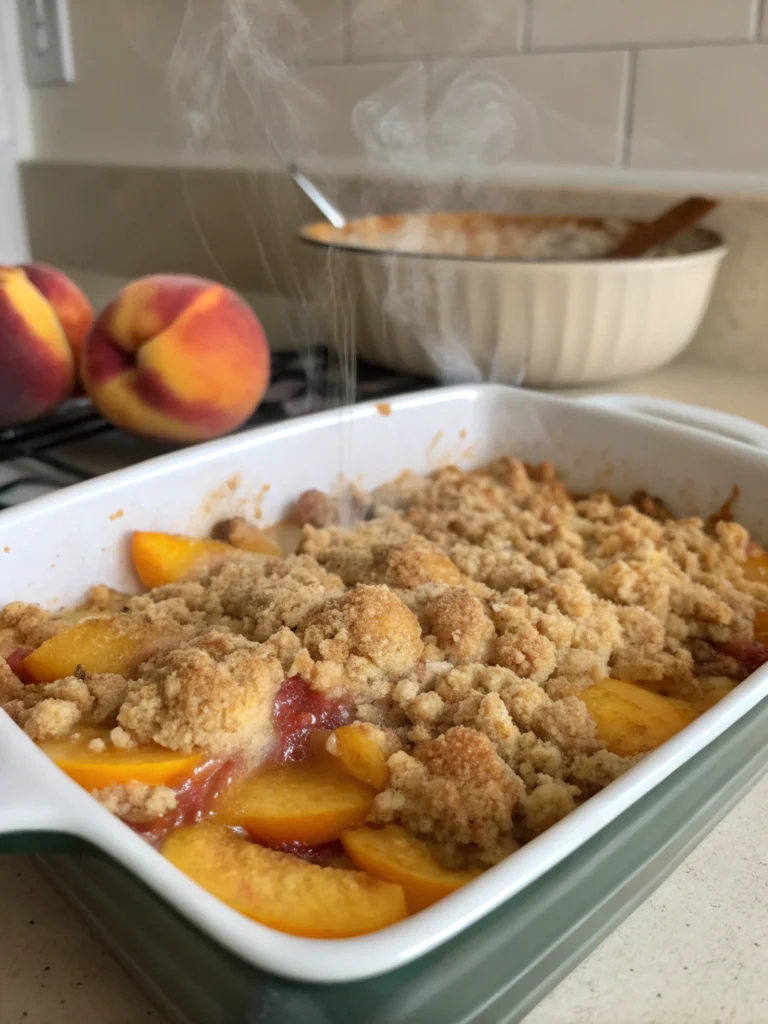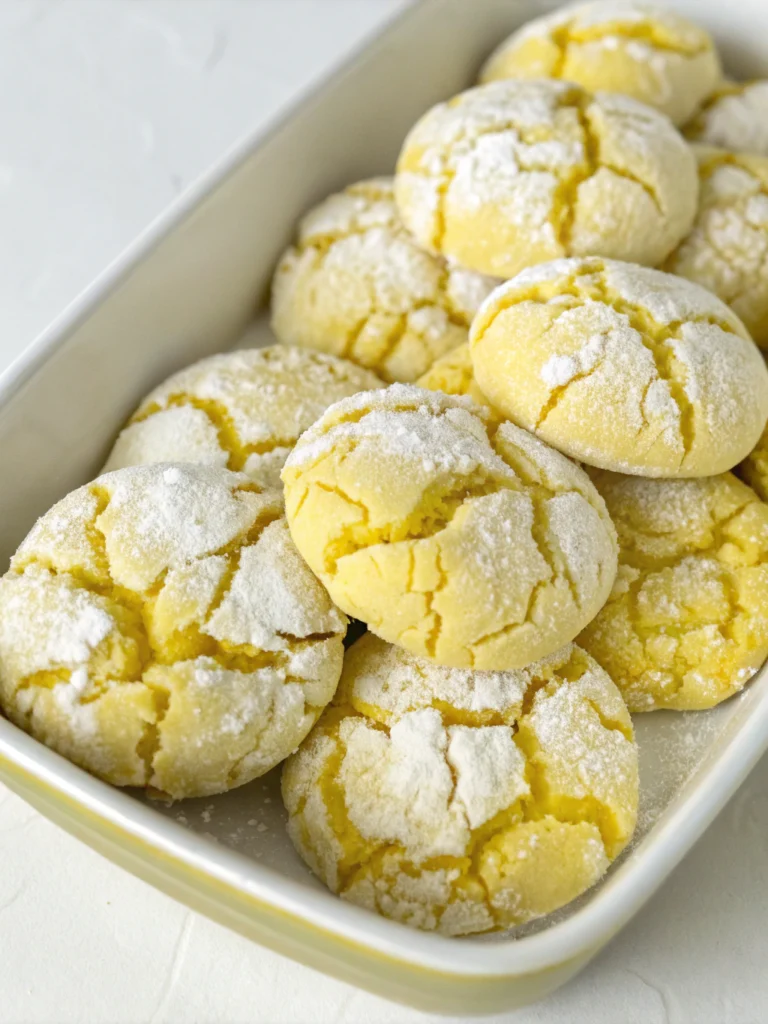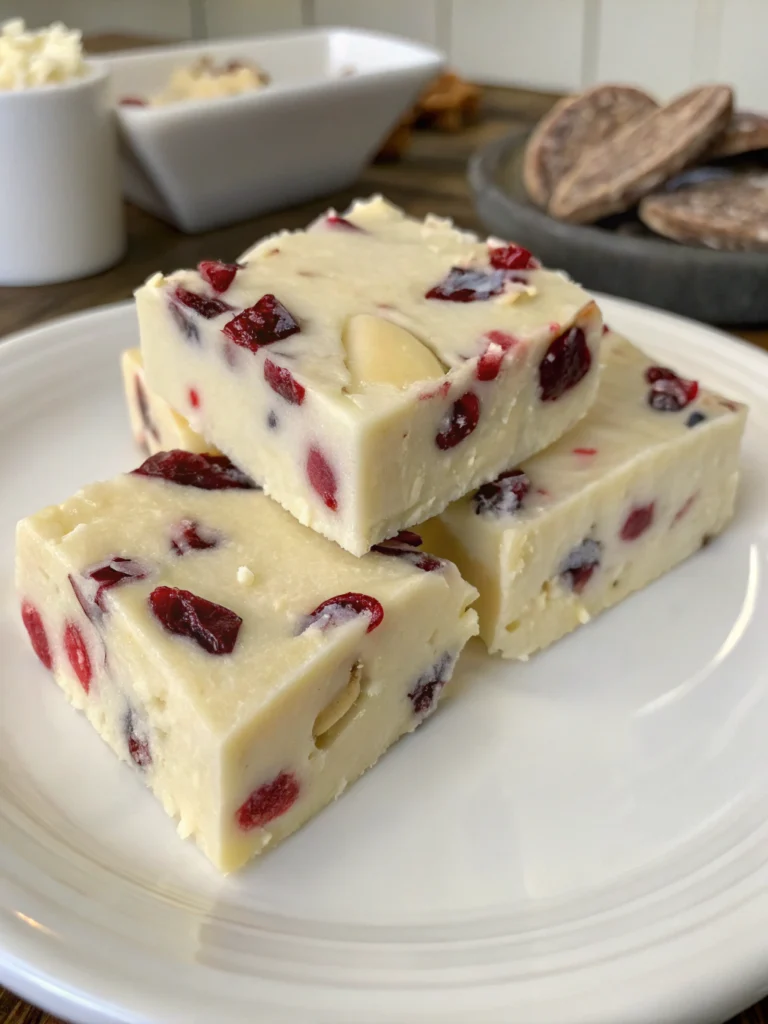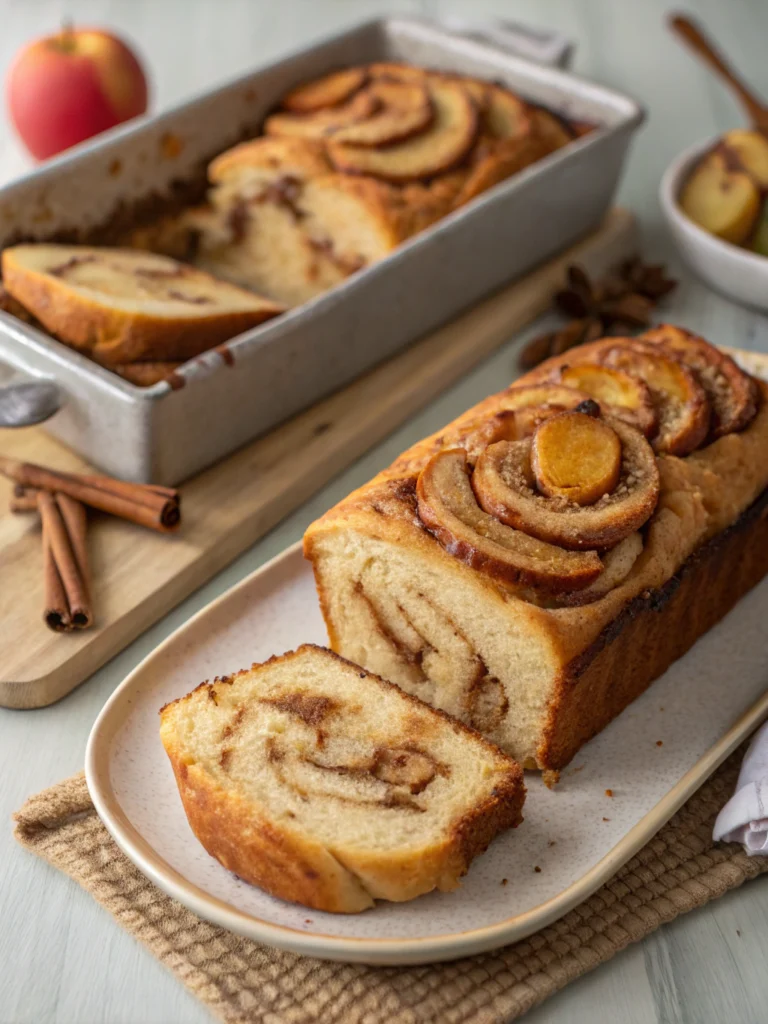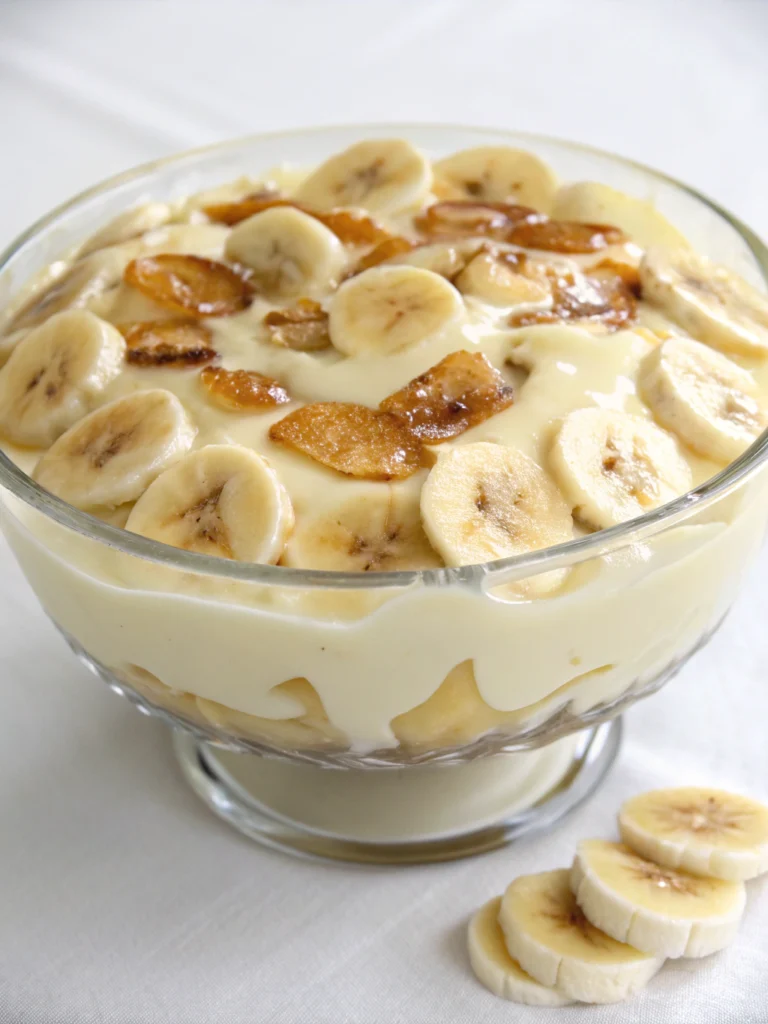Meringue Cookies
Light as air and delicately sweet, these classic meringue cookies melt in your mouth with a satisfying crisp exterior and pillowy interior. Perfect for holiday gatherings or afternoon tea!
Easy Meringue Cookies Recipe
There’s something magical about the transformation of humble egg whites and sugar into these ethereal meringue cookies. With their crisp exterior that shatters at first bite and cloud-like interior that dissolves on your tongue, homemade meringue cookies are a testament to simplicity’s power. These elegant little treats have graced dessert tables across generations, bringing a touch of refinement without complicated techniques.
In winter, these snow-white confections complement holiday spreads beautifully, while in spring and summer, they pair wonderfully with seasonal berries and cream. What makes this meringue cookies recipe truly special is that it requires just a handful of pantry staples, yet delivers a sophisticated dessert that looks like it came from a high-end patisserie.
THIS RECIPE:
- Requires only 5 basic ingredients
- Creates light, airy cookies with a crisp shell and soft center
- Can be flavored or colored in countless variations
- Keeps well for up to two weeks when stored properly
| Recipe Details | Information |
|---|---|
| Prep Time | 15 minutes |
| Cook Time | 1 hour 30 minutes |
| Cooling Time | 1 hour |
| Total Time | 2 hours 45 minutes |
| Yield | 24-30 cookies |
| Serving Size | 2 cookies |
Don’t let their delicate appearance fool you—meringue cookies are surprisingly forgiving to make. The slow baking process means you don’t need to hover anxiously by the oven, and the simple ingredient list makes this an accessible recipe for bakers of all skill levels. Even better, these cookies are naturally gluten-free, making them a perfect treat for those with dietary restrictions.
Ingredients for Meringue Cookies
When making meringue cookies, ingredient quality matters significantly. Since there are so few components in this recipe, each one plays a crucial role in the final texture and flavor. The star ingredients—egg whites and sugar—should be the highest quality you can find. Room temperature egg whites whip up to greater volume than cold ones, so plan accordingly.
Main Ingredients:
- 4 large egg whites, at room temperature
- 1/4 teaspoon cream of tartar
- 1 cup (200g) granulated sugar
- 1 teaspoon pure vanilla extract
- 1/8 teaspoon salt
Optional Additions:
- 1/4 teaspoon almond extract
- Food coloring (gel preferred)
- 1/2 cup finely chopped nuts
- 1/4 cup mini chocolate chips
- 2 tablespoons cocoa powder (for chocolate meringues)
| Ingredient Category | Recommended Quantity | Quality Tips |
|---|---|---|
| Egg Whites | 4 large (120g) | Use fresh eggs at room temperature; separate when cold for easier handling |
| Sugar | 1 cup (200g) | Superfine/caster sugar dissolves faster, but regular granulated works well |
| Stabilizers | 1/4 tsp cream of tartar | Can substitute with 1/2 tsp lemon juice or white vinegar |
| Flavorings | 1 tsp vanilla extract | Use pure extract, not imitation, for best flavor |
| Salt | 1/8 teaspoon | Fine sea salt blends most evenly |
For the most reliable results, use eggs that are 3-5 days old rather than extremely fresh ones. The proteins in slightly older egg whites create more stable meringues. And while granulated sugar works perfectly well, superfine sugar (also called caster sugar) dissolves more readily, creating an even smoother meringue texture.
How to Make Meringue Cookies
Creating perfect meringue cookies is about patience and technique. The process requires whipping air into egg whites until they transform into a glossy, stiff mass that holds its shape. The low, slow baking that follows isn’t so much about cooking as it is about gently dehydrating the meringue, allowing the exterior to crisp while maintaining that delightful melt-in-your-mouth interior.
Step-by-Step Instructions:
Prepare your equipment: Preheat your oven to 225°F (105°C). Line two baking sheets with parchment paper. Make sure your mixing bowl and beaters are completely clean and free from any grease.
Separate your eggs: Carefully separate the whites from the yolks, ensuring no yolk contaminates the whites. Allow the whites to come to room temperature for 30 minutes.
Begin whipping: Place the egg whites in your clean mixing bowl and begin beating on low speed until they become frothy, about 1 minute.
Add stabilizer: Sprinkle in the cream of tartar and salt, then increase speed to medium and beat until soft peaks form (when you lift the beater, peaks will form but curl at the tips).
Gradually add sugar: With the mixer running, add sugar one tablespoon at a time, allowing each addition to fully incorporate before adding the next. This slow process takes about 3-4 minutes.
Beat to stiff, glossy peaks: Continue beating on medium-high speed until the meringue becomes thick, glossy, and forms stiff peaks (when lifted, peaks stand straight up). This usually takes 4-5 minutes.
Add flavorings: Gently fold in the vanilla extract and any other flavoring or mix-ins using a rubber spatula, taking care not to deflate the meringue.
Pipe or spoon: Transfer the meringue to a piping bag fitted with a star tip (or simply cut the tip off a ziplock bag). Pipe 1.5-inch rounds onto the prepared baking sheets, spacing them about 1 inch apart. Alternatively, drop by spoonfuls for a more rustic look.
Bake: Place baking sheets in the preheated oven and bake for 1 hour and 30 minutes. The meringues should feel dry to the touch and lift easily from the parchment paper.
Cool completely: Turn off the oven, crack the door open slightly, and leave the meringues inside to cool gradually for about 1 hour. This prevents cracking from sudden temperature changes.
The meringues should be completely dry on the outside but still have that characteristic light interior. If you notice any stickiness, they may need additional drying time in the oven.
Tips for Making Meringue Cookies
Expert Advice for Perfect Meringues
- Weather matters: Avoid making meringues on humid days, as they can absorb moisture from the air and become sticky.
- Fat is the enemy: Even a tiny speck of egg yolk or oil can prevent egg whites from whipping properly.
- Temperature control: Room temperature egg whites whip to greater volume than cold ones.
- Patience pays off: Add sugar gradually and beat thoroughly for a stable meringue that won’t weep or collapse.
| Technique | Recommendation | Why It Matters |
|---|---|---|
| Separating Eggs | Use three bowls: one for cracking, one for whites, one for yolks | Prevents contaminating multiple whites if a yolk breaks |
| Sugar Addition | Add 1 tablespoon every 15 seconds | Allows sugar to fully dissolve, preventing graininess |
| Testing Doneness | Rub meringue between fingers—should feel smooth, not gritty | Ensures all sugar is dissolved for proper structure |
| Oven Door | Never open during first hour of baking | Prevents temperature fluctuations that cause cracking |
Pro tip: If you’re not sure if your meringue has reached stiff peaks, turn the bowl upside down over your head—if you’ve done it right, nothing will fall out! (Do this at your own risk, though!)
When piping meringues, apply steady pressure and pull up with a quick twist at the end to create that classic peaked shape. If the meringue doesn’t hold its shape when piped, it needs more beating time. And remember that meringues will not expand during baking, so pipe them at the size you want them to be.
Make-Ahead Instructions
Meringue cookies are excellent candidates for make-ahead preparation, which is especially useful for holiday planning or special occasions. The meringue batter itself should be used immediately after preparation, but the baked cookies store beautifully.
For the freshest results, you can prepare and bake meringue cookies up to two weeks before you need them. Once completely cooled, store them in airtight containers with parchment paper between layers. Keep them away from moisture and humidity, preferably in a cool, dry place.
If you’re planning an elaborate dessert with meringue cookies as a component, you can prepare them well in advance:
- Baked meringue cookies will stay fresh in an airtight container at room temperature for up to 2 weeks
- For longer storage, place in freezer bags or containers and freeze for up to 3 months
- Allow frozen meringues to thaw in their container at room temperature for 1-2 hours before serving
Pro tip: If your stored meringues become slightly soft or chewy, you can crisp them up again by placing them in a 200°F (93°C) oven for about 10-15 minutes, then allowing them to cool completely.
Storing Leftovers
Proper storage is crucial for maintaining the delightful texture of your meringue cookies. The enemy of crisp meringues is moisture, which can quickly turn them soft and sticky.
After your meringue cookies have cooled completely, transfer them to an airtight container. For extra protection against humidity, add a small packet of silica gel (like those found in new shoe boxes) or a few grains of uncooked rice wrapped in paper towel to absorb any moisture.
- Store at room temperature in a cool, dry place (not the refrigerator, which contains moisture)
- Place parchment paper between layers to prevent sticking
- Keep away from strong-smelling foods, as meringues can absorb odors
- Consume within 2 weeks for best quality
If your stored meringues have softened but aren’t spoiled, you can refresh them in a 200°F (93°C) oven for 10-15 minutes, then allow them to cool completely before returning to an airtight container.
Freezing Meringue Cookies
Yes, you can freeze meringue cookies successfully if you follow the proper procedure! This is especially useful for holiday planning or when you want to make a large batch to enjoy over time.
Freezing Process:
- Ensure meringues are completely cooled after baking
- Layer the meringues between sheets of parchment paper in a rigid container (not a bag, which may crush them)
- Seal the container, then place inside a freezer bag for extra protection against freezer odors and moisture
- Label with the date and contents
- Freeze for up to 3 months
When ready to use your frozen meringues, proper thawing is important:
- Remove the container from the freezer but do not open it immediately
- Allow the container to come to room temperature (about 1-2 hours)
- Once at room temperature, open the container and check the meringues
- If needed, crisp them in a 200°F (93°C) oven for 10-15 minutes
Pro tip: Freezing works best for plain meringues. Those with chocolate chips or nuts may have texture changes after freezing and thawing.
Serving Suggestions
These cloud-like meringue cookies are versatile enough to be served on their own or as components in more elaborate desserts. Their delicate sweetness pairs beautifully with a variety of accompaniments.
Elegant Serving Ideas:
- Create a meringue cookie sandwich with a dollop of lemon curd or raspberry jam
- Serve alongside a scoop of sorbet or ice cream for textural contrast
- Crumble over fresh berries and whipped cream for an impromptu Eton mess
- Arrange on a dessert platter with chocolate truffles and fresh fruit for a stunning display
For a special occasion, try creating a meringue cookie tower by stacking cookies of descending sizes with light dabs of whipped cream between layers.
Beverage Pairings:
- Tea: Earl Grey or chamomile complement the delicate sweetness
- Coffee: A rich espresso balances the sweetness perfectly
- Wine: A late-harvest Riesling or Moscato d’Asti enhances the light texture
- For special occasions: Champagne or Prosecco offer delightful contrast
Meringue cookies should be served at room temperature when their texture is at its best—crisp exterior with that characteristic melt-in-your-mouth interior.
FAQ
Can I make meringue cookies without cream of tartar?
Yes! While cream of tartar helps stabilize the egg whites, you can substitute it with the same amount of white vinegar or twice the amount of lemon juice. Both acid alternatives will help stabilize your meringue, though cream of tartar produces the most reliable results.
Why did my meringues crack?
Cracking usually happens due to rapid temperature changes. To prevent this, never open the oven door during baking, and allow meringues to cool gradually in the turned-off oven with the door slightly ajar. Also, make sure you’re baking at a low temperature—typically no higher than 225°F (105°C).
Can I use brown sugar instead of white sugar for meringue cookies?
While technically possible, brown sugar isn’t recommended as its molasses content adds moisture and can prevent meringues from drying properly. It also changes the classic white appearance. Stick with white granulated or superfine sugar for best results.
My meringues turned out chewy instead of crisp. What went wrong?
Chewy meringues typically result from underbaking or humidity. They may need more time in the oven, or you might be baking on a particularly humid day. Try extending the baking time by 15-30 minutes, and always store in airtight containers. You can also try putting slightly chewy meringues back in a 200°F oven for 10-15 minutes to crisp them up.
How can I add color to my meringue cookies without deflating them?
Gel food coloring is best for meringues as it adds intense color without excess moisture. Add a tiny amount with a toothpick after achieving stiff peaks, then fold gently with a rubber spatula using no more than 4-5 folding motions to maintain volume.

